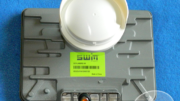One of the true joys of maintaining this blog is finding really, really old content. When I first took the reins back in 2012, I relied heavily on The Internet Archive to retrieve long-forgotten articles. Most of the time, those articles aren’t really that exciting. Usually they’re just fun to laugh at. Here’s one of those times.
Take a look at the world of 2010
Back in 2010, DIRECTV’s SWM technology was pretty new. Although it was first rolled out in 2008 and became standard for new installs in 2009, many people still hadn’t heard of it. For DIYers it was a dream come true. For years, people with multiple TVs had dutifully run two cables to every single room in order to be ready for the coming DVR revolution. This was a lot of cabling and it also meant that a lot of houses that were pre-wired couldn’t get away without additional cables.
DIRECTV, which was a separate company and not part of AT&T in those days, realized it was missing out. All that cabling was expensive for its own installers and it was driving potential DIYers away. They came up with a plan for a whole new type of device.
Part fish, part fowl
The Single Wire Multiswitch is an odd mix between a multiswitch, a stacker, and an agile modulator. Traditional multiswitches send one of six different possible signals down a cable. Each signal takes up enough space on the cable that it’s impossible to have more than two of them on a line at the same time. That’s why you needed to have multiple cables to a single device.
Before the Single Wire Multiswitch, DIRECTV used a device called a stacker. The stacker put two different DIRECTV signals on the same cable by changing the frequency range of one of them. This worked ver well when there were only two possible choices from that old round dish. However, when HD came in and the minimum number of signals increased to four, it didn’t work at all.
This is where a traditional multiswitch comes in. A multiswitch is part splitter, part traffic cop. It determines which of up to six signals your receiver actually wants to receive and sends only that signal down the line to the receiver.
The other part of a Single Wire Multiswitch is most like a modulator. In a SWM, each receiver actually gets only the channel it needs, rather than getting the whole signal. Originally, a SWM could send up to 8 signals down a single line. Later, digital filtering made it possible to send up to 21, although receivers were only able to use 13 much of the time. It stacks each signal in a different
By combining the best aspects of a multiswitch, a stacker, and a modulator, a SWM lets DIRECTV customers watch all their programming using a single wire connection to the receiver. This is even true with the Genie 2, which packs the ability to record 7 things at once and would actually require 11 cables otherwise.
Don’t take my word for it
The first mass-market SWM, the SWM-8, is pretty old news today, although we still sell it at Solid Signal. The person who appears in this video is still with the company, too, although he long ago ditched the “emo hair.” We’re all pretty glad about that.





